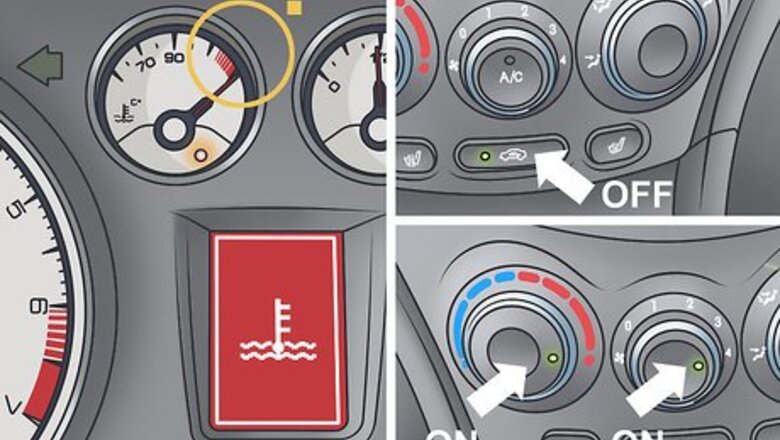
views
Taking Immediate Action

Turn off the A/C and turn on the heat if you think your vehicle might be overheating. While it might seem counterintuitive, cranking up the heater can actually draw heat away from the engine bay, which might help cool your vehicle down. On the other hand, using air conditioning can worsen the problem. Switch off the A/C, turn on the heat to full blast, and roll down your windows. This isn’t likely to fix the problem but can be a temporary solution if you only have to drive a short distance.

Pull over if the temperature gauge creeps into the hot zone. If you notice your engine temperature climbing into the hot, or orange/red, zone, don’t continue driving the vehicle. As soon as it is safe to do so, pull over on the side of the road. Turn your hazard lights on so other motorists know that you are having mechanical issues. Some vehicles may have a warning light that comes on when the engine begins to overheat. This is especially important if you notice steam pouring out from under the hood! Continuing to drive under these conditions could create additional mechanical problems.
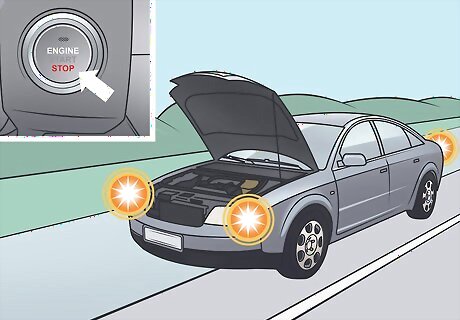
Shut off your vehicle and pop the hood. Start by turning off your vehicle. Then, carefully open the hood to allow excess heat to disperse faster and steam to escape. Press the hood latch on the interior of your vehicle, go around to the front of the vehicle, release the safety lever, and open the hood. Take care not to burn your fingers!
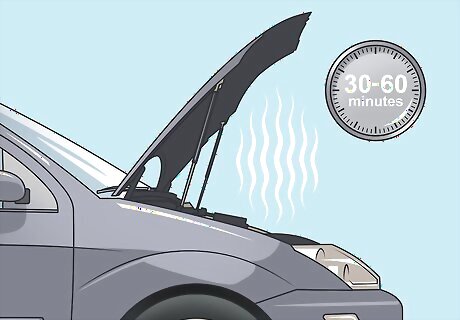
Let your vehicle cool down for at least 30-60 minutes. If your engine is overheated, everything under the hood will be extremely hot. Do not attempt to diagnose or fix the problem until your car has cooled down. Wait for the temperature gauge to return to a normal reading before moving forward. This can take up to an hour, so make sure you’re parked in a safe spot.Warning: Do not remove the radiator cap while the engine is hot! Doing so can cause incredibly hot, pressurized coolant to spew out and burn you.
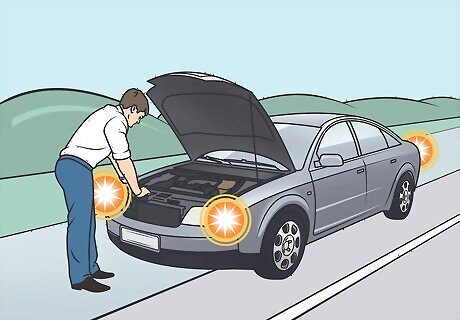
Look for steam, leaks, or other issues. Do a brief inspection to see if you can figure out what the problem is. Steam or smoke pouring out or leaking coolant (also called antifreeze) from the radiator, hoses, or engine are signs of a serious problem. Your coolant may be orange/red or green, depending on the type. If you hear bubbling coming from under the hood, it means your cooling system is over pressurized and your engine is overheating.

Check the coolant reservoir tank and fill it if needed. Your vehicle has a plastic reservoir of coolant connected to the top of the radiator. Locate the reservoir and twist the cap counterclockwise to remove it. This will allow you to see if your coolant is low. Look for marks indicating the proper level of coolant, and check to see if the coolant is at or below that level. Only add coolant once your vehicle has cooled down. If the reservoir is low, add coolant to your reservoir to the fill line. Replace the reservoir cap when you're done. You can use distilled water rather than coolant in a pinch. However, avoid using cold water as it could create additional problems, including cracking your engine block. Use warm water only. If you have a European car or any vehicle with a closed cooling system, follow the manufacturer's instructions exactly when adding coolant to prevent overfilling and to prevent air bubbles from entering the system.

Continue driving if adding coolant fixed the problem. After adding coolant, turn on your vehicle and check the temperature gauge. If it has returned to a normal level, it may be safe to continue driving. However, it’s best to get your vehicle inspected by a mechanic as soon as possible to ensure that there are no additional problems.
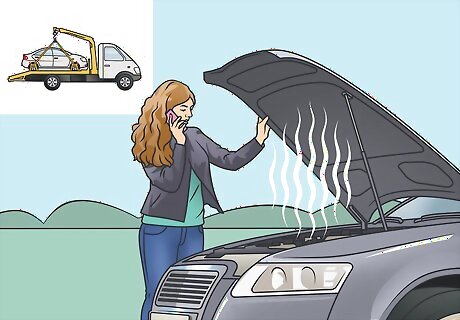
Call a tow truck if you have a leak, the vehicle doesn’t cool down, or you suspect other problems. If you have a coolant leak or the vehicle’s temperature gauge does not return to normal, do not attempt to drive your vehicle. Call a tow truck and ask to have your vehicle towed to a reputable mechanic. While it may be an inconvenience, getting your vehicle fixed now can prevent more costly repairs in the future.
Diagnosing and Fixing Major Issues
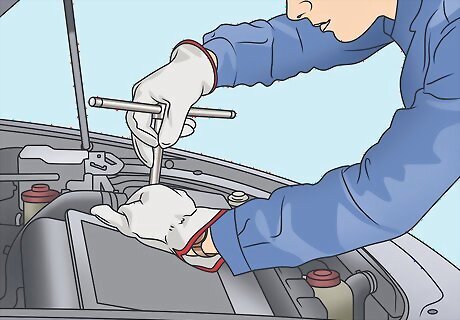
Take your vehicle to a reputable repair shop for diagnosis and repairs. Whether you were able to drive the vehicle home or needed to call a tow truck, the next step is to inspect the cooling system and make necessary repairs. Unless you have mechanical knowledge and experience, it’s best to hire a professional to service your vehicle. Schedule an appointment with a mechanic and describe any issues you’re having as well as any steps you’ve taken to address those issues.

Repair any leaks in the cooling system. Coolant may leak from the radiator, hoses, freeze plugs, heater core, or intake manifold gasket. Find the source of the leak and replace the necessary components to get your vehicle up and running again.

Check for blocked airflow to your radiator and inspect your cooling fans. Proper airflow is necessary to cool your vehicle’s engine. Ensure that nothing is blocking air from flowing to your radiator. Then, inspect your cooling fans to see if they are operating properly. Remove any obstructions and/or replace the fans or fan motor, if necessary. Additionally, if the fins on your radiator are bent, it may prevent your vehicle from cooling itself properly.
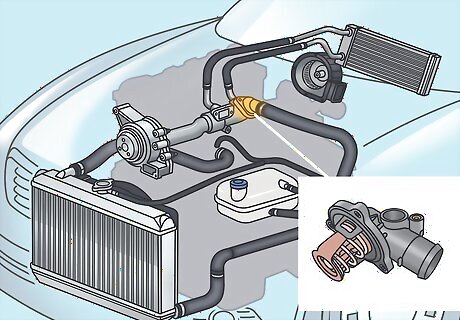
Install a new thermostat if yours has failed. If the thermostat remains closed, it prevents coolant from running through the engine, leading to an overheated vehicle. Replace your thermostat to correct the problem. If you continue driving the vehicle while the thermostat remains in the closed position, it can cause major engine damage, leading to more expensive repairs.
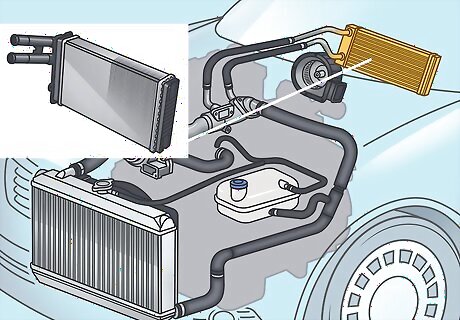
Find out if your heater core is leaking or clogged and repair or replace it. Inspect the heater core and attached hoses for leaks. If there aren’t any leaks, you can pressure test the heater core to see if it is working properly. If it’s not, flushing it may solve the problem. However, you may need to replace the heater core if that doesn’t work. A non-operational heater is another sign of a bad heater core. Additionally, check for coolant on the floor of the passenger side of the vehicle to see if the heater core might be the culprit.
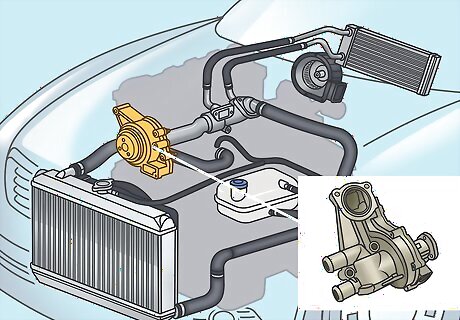
Ensure your water pump is operating correctly. A malfunctioning water pump can create all sorts of issues, including an overheating engine. Check for leaks in and around the water pump. If you see any, try replacing the gasket first. If that doesn’t work, replace the water pump. You may hear a rumbling noise while your vehicle is running if the pump is dry. Try adding coolant to the max fill line to see if that resolves the issue. Dirty coolant and corrosion can cause a water pump to fail, in which case you'd need to replace the pump.
Preventing Future Problems

Check your coolant level once per month. Low coolant is one of the most common reasons that a vehicle will overheat. To prevent this issue, check your coolant level frequently. If it’s low, top it off to the max fill line. Be sure to use the type of coolant recommended in your owner’s manual. Always let your vehicle cool down before checking or adding coolant.
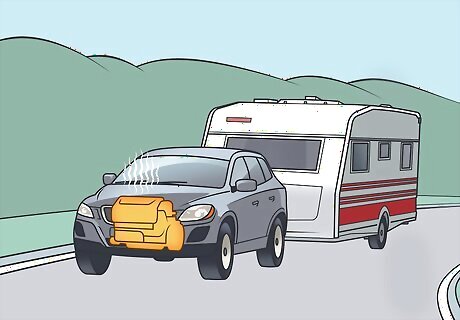
Tow only the recommended load for your vehicle. Towing a load puts additional strain on your vehicle’s engine, especially if you are driving a long distance or up steep inclines. Refer to your owner’s manual to figure out what the recommended towing load is for your vehicle and take care not to exceed it.
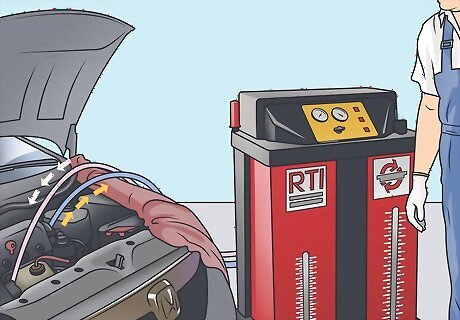
Have your coolant system flushed every 1-2 years. Even if you’ve never had issues with overheating, flushing your coolant system is an important part of routine maintenance. Arrange to have a certified mechanic perform this service every 1-2 years or as often as your owner’s manual recommends. Make sure your mechanic checks the pH level of your coolant as well.

















Comments
0 comment